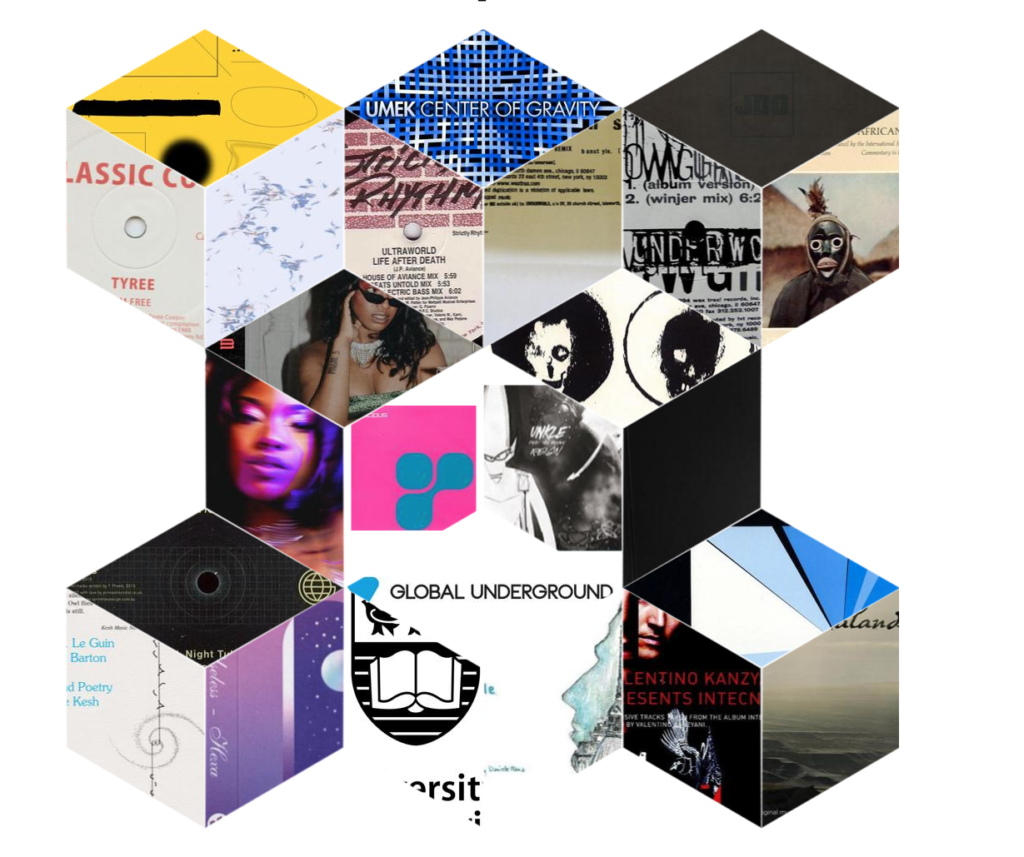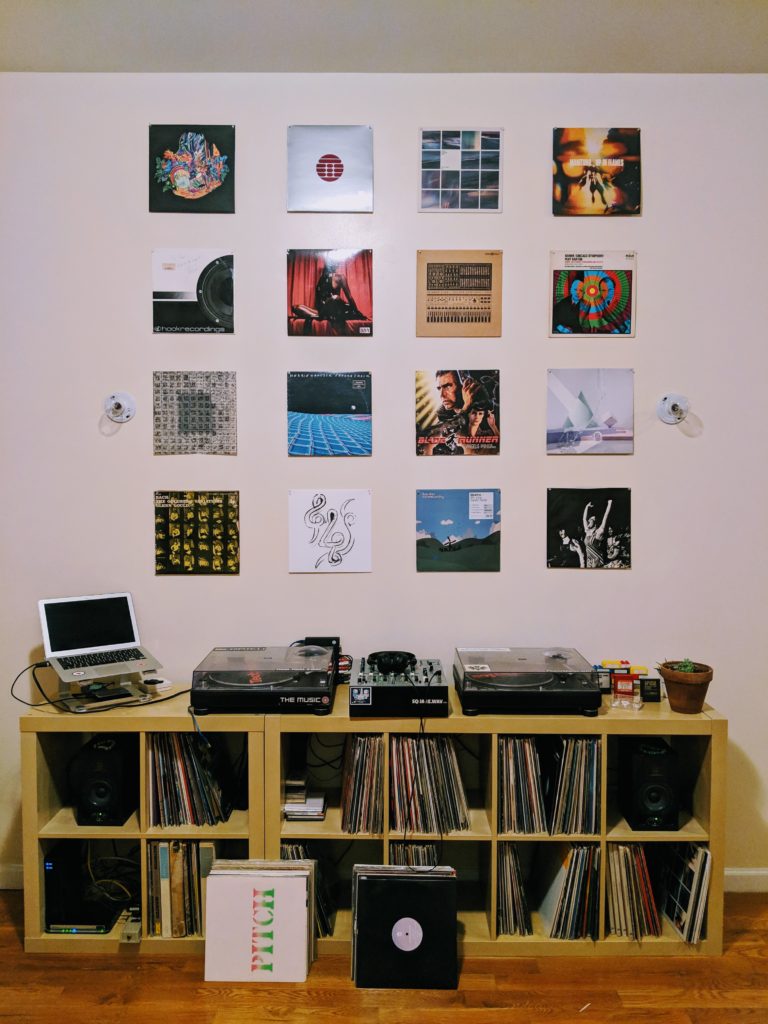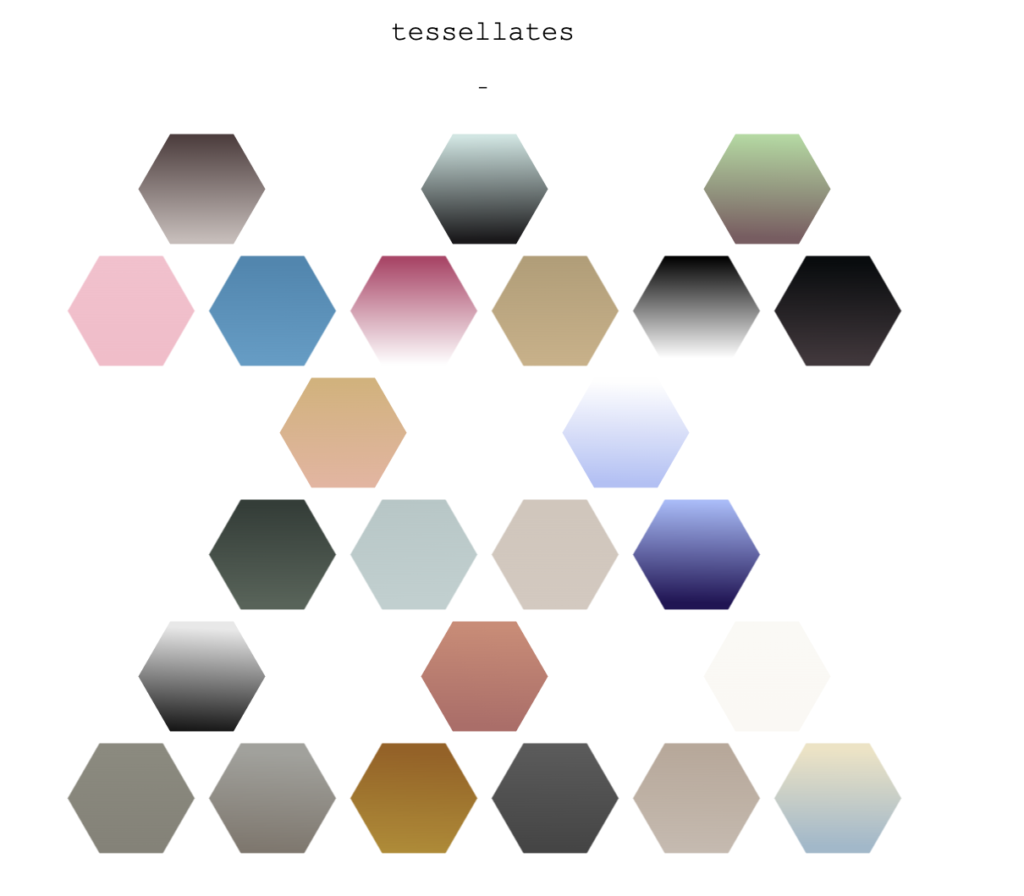I’m pretty happy with my vinyl collection: it’s about 500 records, so not very big, in a classic Ikea grid-shelf, with the turntables on top:
The computer on the left has the digital collection, which I can now tell you is about 2,500 “albums” — though many of those albums are only a single file long.
I’ve been thinking about how much having physical space affords my physical collection, which is something of a silly statement. But one thing that it affords easily is geometry: I can make the nice grid above, of some of my favorite / most show-off-y sort of records, without having to make some sort of custom view software — I just move things around, very nice.
Well, after a lot of work, much of which was simply in organizing both the digital and the physical collections, I have finished a v0.1 of that custom view software that I am happy with. It’s called tessellates, and, well, it tessellates things:
That’s the loading screen, while it waits for the cover art to load. After that, you get something like this:

There are three views — that’s rhombus. There’s also square, which is nine items, and triangle, which is 45 (!) items at a time. There’s nice attract-mode animations if you wait, nice loading things, and decent pagination going on. There’s also a lot of improvements to be made, not least in performance load times, and data access. It’s written using fabric.js and good old vanilla dot js — but maybe I should take fabric out and try to do it all in raw CSS.
One of the things I am happy with it doing is getting away from spreadsheet music: on the rhombus view in particular, it’s tough to intuit the “order” of the releases. You simply view them in geometric space. I have plans to add a few more views later this year that are even less spread-sheet-ish: concentric circles at the very least.
I also need to do playback, of course — but for now, it’s a great display.


